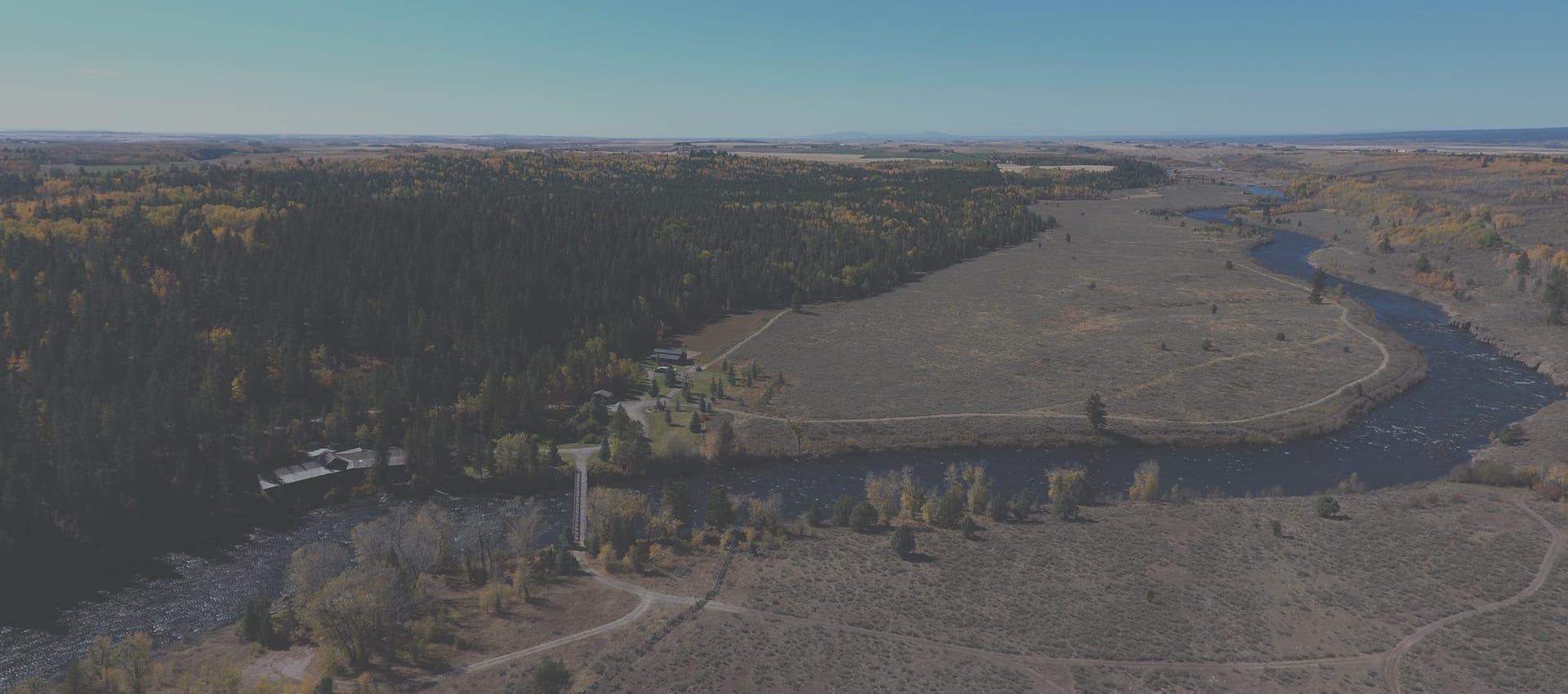About Pitchstone Waters

We are focused on restoring biodiversity in the Rocky Mountain West.
Pitchstone Waters is a 603-acre ranch located near Ashton, Idaho, in the wild and scenic Fall River-Henry’s Fork outflow of Yellowstone’s Pitchstone Plateau. The diverse, privately owned ranch is bordered on two sides by the Caribou-Targhee National Forest.
The southwest corner of Yellowstone National Park is about five miles away via U.S. ForestService roads. The national forest along with Teton and Yellowstone parks encompass more than 5 million acres within the 18-million acre Greater Yellowstone Ecosystem, one of the last remaining nearly intact ecosystems in the Earth’s northern temperate zone.
The landscape is a mix. It contains open meadows, river bottom, running creeks, rolling hillsides, quaking aspen groves and stands of “dark timber,” the name given to mixed forests made up primarily of pine, fir and spruce trees.
One mile of the freestone Fall River, which originates in Yellowstone National Park, bisects the ranch as it flows out of Caribou-Targhee National Forest. About 22 miles downstream, the Fall River joins the Henry’s Fork, one of the region’s prize trophy trout fisheries which has more trout (reportedly 16,000) per mile than any other river in the Lower 48. Other nearby fisheries include the South Fork of the Snake, the Snake and the Teton rivers as well as Montana’s Madison River.
The region is an extension of Yellowstone. It is known for abundant wildlife including bison, elk, mule deer, moose, brown and black bear, wolves and other native species including gamebirds like ruffed grouse.
Pitchstone Waters is surrounded by private farms and ranches, and large public forest grazing allotments. These offer many collaborative possibilities. Because national forests can benefit from well-managed animal impact, cattle and/or bison under well-planned holistic rotational grazing programs, along with wildlife including predators, are important tools for revitalizing native plant communities on rangelands and in forests, and the fisheries they support.
The diverse landscape and wildlife combined with abundant live water provide the essential components for a robust ecosystem. The proximity to public land provides a unique opportunity to manage resources at the intersection of private and public ownership, comparing and contrasting techniques and results.

A rancher and a conservationist
Though not quite in the conventional sense of either. Learn more about Christopher Gill and his take on restoring biodiversity and kickstarting discussion on holistic practices.
Read more